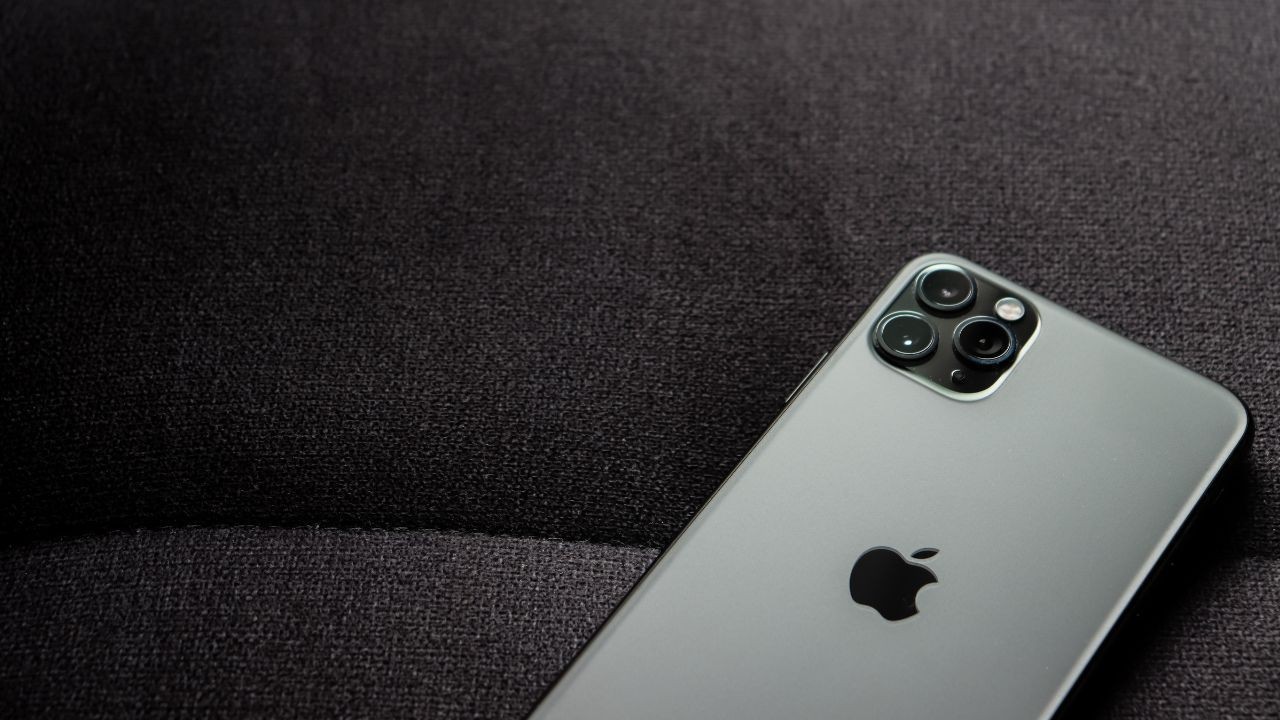
Post by : Zayd Kamal
Mobile phones have transformed dramatically over the past three decades, changing the way we communicate, work, and interact with the world. From the early days of bulky, brick-sized devices to today's sleek, AI-powered smartphones, mobile technology has come a long way. But how mobile phones have evolved over the last 30 years is not just a story of design improvements—it’s a revolution that has reshaped modern life.
The early 1990s marked the beginning of widespread mobile phone usage. Devices like the Motorola DynaTAC 8000X, released in the late 1980s, were large, heavy, and expensive, limiting them to business professionals and the wealthy. However, as the decade progressed, companies like Nokia and Ericsson introduced more compact and affordable models. The Nokia 5110 and Motorola StarTAC became widely popular, making mobile communication accessible to more people. During this time, SMS messaging was introduced, allowing users to send short text messages, a feature that revolutionized communication. Battery life also improved, with lithium-ion batteries extending talk time, making mobile phones more practical for daily use. While mobile phones were still considered a luxury, this period laid the foundation for the massive technological advancements that were yet to come.
The early 2000s saw a massive boom in mobile phone usage as more people adopted mobile devices. The rise of feature phones, produced by companies like Nokia, Samsung, and Sony Ericsson, introduced new capabilities beyond calling and texting. One of the biggest innovations of this decade was the introduction of camera phones, allowing users to capture moments on the go. Phones like the Sharp J-SH04 pioneered mobile photography, followed by models like the Nokia 6600 and Sony Ericsson K750i, which made high-quality images more accessible. Mobile internet also became a reality with WAP and GPRS, allowing users to browse the web on their phones, albeit in a limited form. Business phones like the BlackBerry 6210 brought QWERTY keyboards and mobile emails, making mobile devices indispensable for professionals. By the late 2000s, mobile technology was rapidly evolving, and in 2007, Apple introduced the first iPhone, changing the industry forever.
The 2010s marked the true beginning of the smartphone era, as mobile phones transformed into powerful mini-computers. The launch of the iPhone and Android smartphones revolutionized the industry, replacing physical keyboards with large, high-resolution touchscreens. The introduction of app ecosystems through Apple’s App Store in 2008 and Google Play Store in 2012 allowed users to customize their phones with applications for messaging, gaming, shopping, and more. High-speed data networks, particularly 4G, made streaming, video calls, and cloud computing widely available, making mobile phones more powerful than ever. Smartphones also saw rapid improvements in cameras, with devices like the iPhone X and Samsung Galaxy S10 offering professional-quality photography, fueling the rise of social media platforms like Instagram, Snapchat, and TikTok. Artificial intelligence and voice assistants like Siri, Google Assistant, and Alexa became integrated into smartphones, making them more intuitive and efficient. By the end of the decade, smartphones had become an essential part of daily life, influencing everything from entertainment to education and healthcare.
As we move into the 2020s, mobile phones continue to evolve at an astonishing pace. 5G technology has become mainstream, offering lightning-fast internet speeds that enhance video streaming, gaming, and virtual communication. Mobile phone manufacturers have also begun experimenting with foldable and flexible screens, with devices like the Samsung Galaxy Z Fold and Huawei Mate X pushing the boundaries of phone design. Artificial intelligence and machine learning are playing an even greater role, enabling personalized user experiences, automated security features, and smart assistant improvements. Sustainability is also becoming a focus, with brands shifting toward eco-friendly and repairable smartphones to reduce electronic waste. With the rapid pace of technological advancements, how mobile phones have evolved over the last 30 years is just the beginning. The future promises even more exciting transformations, with mobile devices becoming central to innovations in augmented reality, virtual reality, and even brain-computer interfaces.
Over the past 30 years, mobile phones have evolved from bulky, expensive devices to powerful smartphones that are an essential part of everyday life. In the 1990s, mobile phones were primarily used for calling and texting, with brands like Nokia and Motorola leading the market. The 2000s saw the rise of feature phones, introducing camera technology and mobile internet. The biggest transformation happened in the 2010s with smartphones, where touchscreens, app stores, social media, and AI assistants changed how people interacted with technology. Today, in the 2020s, 5G connectivity, foldable screens, and AI-driven innovations are shaping the future of mobile devices. The evolution of mobile phones is far from over, with exciting developments expected in augmented reality, virtual reality, and AI-powered communication.
This article is for informational purposes only and reflects the technological advancements in mobile phones over the past three decades. The opinions and insights provided do not represent official endorsements of any brand or product. Readers are encouraged to conduct their own research before making any technology-related decisions.

IKEA India Leases 37K Sq Ft in Pune Mall for City Store
IKEA India secures 37,259 sq ft at Phoenix Marketcity, Pune, marking a key step in its city-store ex

UAE-Oman Rail Freight Service Set to Boost Regional Trade
Noatum Logistics and Hafeet Rail partner to start UAE-Oman rail freight, enhancing trade, supply cha

Kosovo President Meets Saudi Minister to Strengthen Ties
Kosovo President Vjosa Osmani met Saudi Minister Faisal Alibrahim to strengthen economic ties and ex

TV Star Paridhi Sharma Enters Films with Controversial Haq
Paridhi Sharma marks her film debut with Haq inspired by the Shah Bano case while facing legal hurdl

ChatGPT Voice Mode Set for Major Upgrades This Month
ChatGPT voice mode gets real-time transcripts, mute/unmute options, rich content, and direct messagi

Doncic Scores 49 as Lakers Beat Timberwolves 128-110
Luka Doncic scores 49 points, Lakers shoot 59% to beat Timberwolves 128-110; Austin Reaves, Rui Hach

iOS 26 Adaptive Power iPhones Get Longer Battery Life
iOS 26 brings Adaptive Power to iPhones, extending battery life intelligently without affecting perf

Doncic Scores 49 as Lakers Beat Timberwolves 128-110
Luka Doncic scores 49 points, Lakers shoot 59% to beat Timberwolves 128-110; Austin Reaves, Rui Hach

Sacramento Kings Beat Utah Jazz 105-104 with Late Sabonis Shot
Domantas Sabonis scores game-winner as Kings beat Jazz 105-104 in home opener, Zach LaVine and Malik

Messi’s Argentina Match in India Postponed, New Date Soon
Argentina’s friendly against India in Kochi is postponed due to FIFA approval delays; organizers wil

Rohit and Kohli End ODI Careers in Australia with Win
Rohit Sharma and Virat Kohli bid farewell to Australian ODIs after a final win, forming a 168-run un

George Russell Sneaks into Mexican GP Stands in Wrestling Mask
George Russell wore a Mexican wrestling mask to watch practice from the stands during the Mexican Gr

Dutch Cyclists Van de Wouw and Wiebes Win Second World Titles
Dutch riders Hetty van de Wouw and Lorena Wiebes win second world titles at UCI Track Cycling Champi

Williamson Returns to New Zealand Squad for ODI Series
Former captain Kane Williamson returns for ODIs against England, balancing family, pro leagues, and

Services Bowlers Make History With Two Hat-Tricks in Assam
Services bowlers Arjun Sharma and Mohit Jangra achieved two hat-tricks in Assam’s Ranji Trophy match